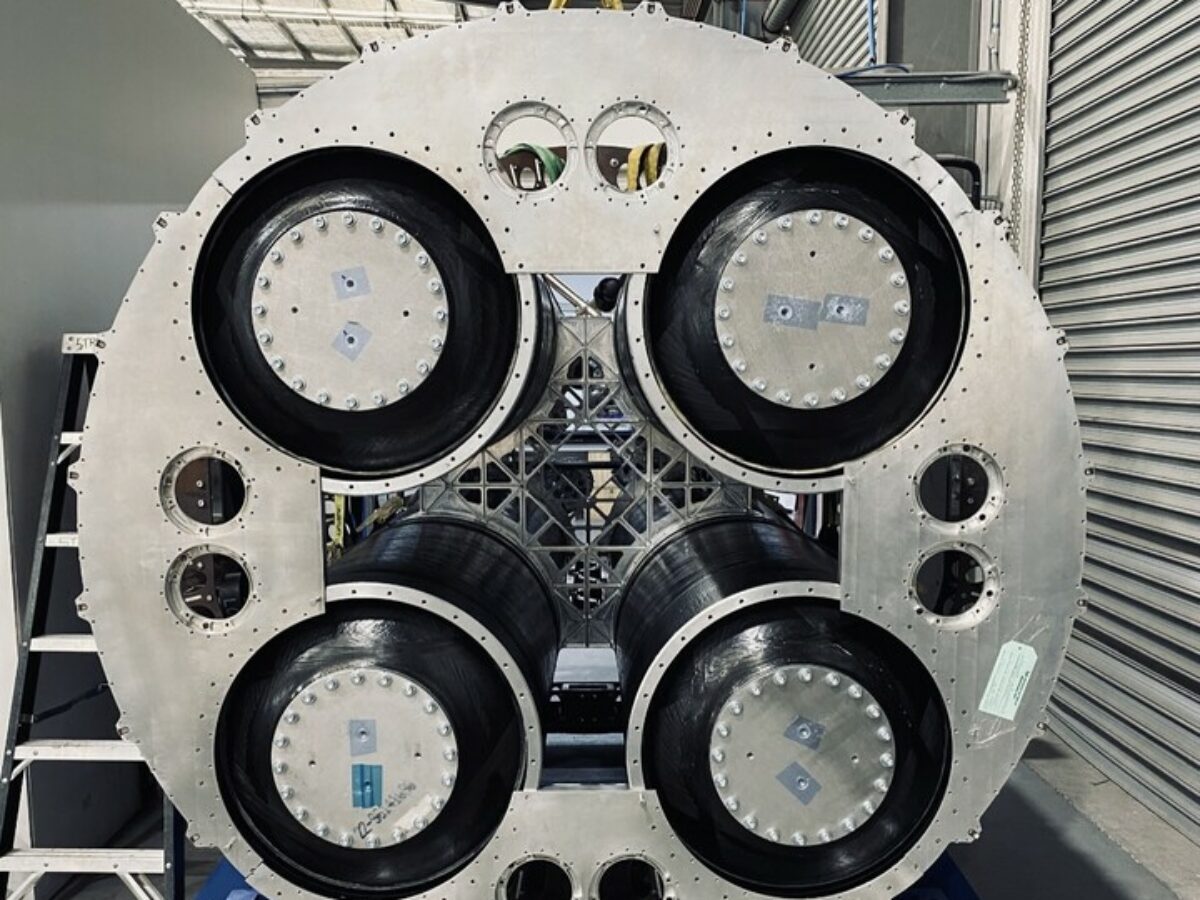The importance of space technology in Australia

The federal government recently cancelled a number of key space initiatives, including funding for the Access to Space and National Space Mission for Earth Observation programs. Rather than assess the merit of these decisions, I’d rather emphasise the importance of space to our country. By Adam Gilmour.
You’ve probably heard this before… but space technology is everywhere.
We use it daily to navigate with Google maps, book a car on Uber, check on the week’s weather, withdraw cash from the ATM, make international calls, watch live broadcasts from around the world, video chat with our families, ‘tap and pay’ using our credit cards, and much more.
Space technology enables our global financial markets, helps us track supply chains for food and critical materials, monitor global climate change, find new mineral deposits in less intrusive ways, and gives farmers the info and tools they need to maximise yields on their crops – e.g., by helping them ‘see’ the amount of water or fertiliser in their paddocks, control autonomous farm vehicles, etc.
It allows us to quickly detect bushfires from space, as I recently discussed in an InnovationAus wildfire webinar with the Minderoo Foundation and XPRIZE. Indeed, the same could be said for real-time monitoring of flood waters and other natural disasters.
It also allows us to defend our country from adversaries. Satellites can show us ships, tanks, and aircraft from above, monitor if/when missiles are launched. It allows Australia’s defence force to communicate with each other anywhere on the planet, and enables weapons to be delivered with precision. In many ways, without space tech, we could be defending ourselves with WW2 technology.
Space tech will power our future
The future of space is even more exciting when you look at what’s coming…
– 3D printing human organs in space: One of the problems faced by researchers in this area is simply gravity, which can collapse structures before a print is completed. It’s possible that this could overcome by printing new organs in zero gravity.
– Medicines made in space: Early tests by pharmaceutical companies suggest that some medicines could be better manufactured in the microgravity of space. New medicine factories could be launched to orbit and returned safely to Earth on cargo vehicles such as SpaceX’s Dragon.
– Clean energy from space: Solar power stations in space could generate 35% more power than on Earth. They wouldn’t be blocked by clouds or the atmosphere; and can be positioned in the sun for up to 24 hours a day, beaming energy back to Earth using low-power microwaves that won’t harm passing satellites, planes, or birds. In fact, there are companies here working on very thin film solar panels that can be deployed in space, as well as solar panels that can expand on the edge of a big balloon structure.
– Early fire detection from space: It’s possible to deploy a constellation of satellites that could detect a bushfire within minutes of it starting. Early detection allows emergency services to put fires out before they spread and helps them conduct faster evacuations. In fact, a lot of fire-related damage and risk could be mitigated with technology available today… but we need to act now: build satellites that meet our local requirements and launch them. With better use of satellite technology, we could drastically reduce the number of lives lost in these bushfires.
– A similar constellation could track floods, hurricanes, and other natural disasters with close to real-time information. There are companies working on apps that could ‘tell’ you if/when your area might be affected by a flood, how deep the water is over a road you’re planning to cross, and even suggest safer routes to your destination.
– Fully autonomous vehicles: Self-driving trains, buses, cars, farm vehicles, ships and potentially even aircraft, use satellite-based navigation and communication systems. This technology is already being used in many parts of the world, including remote locations in Australia’s Pilbara region.
– Location tracking from space: If you have the latest Apple phone, you might have noticed an emergency service that allows you to send an SOS via satellite connectivity in areas with no cellular or Wi-Fi coverage. It can even detect if you’ve been in a car crash and send an automatic alert to emergency services. This, and other life-saving services like it, could soon be available to everyone.
Space is often described as the next internet, and I would agree. Many of the world’s largest companies – Alphabet (Google), Meta (Facebook), Apple and Amazon – are Internet companies, and they are investing directly into space. It’s very exciting to think that we’ve only scratched the surface when it comes to the applications of new space technology.
Benefits of having an Australian space industry
As the founder of an Australian-owned company that’s fully committed to growing a sustainable and significant space industry in Australia, I hope to see the government and industry coming together to look at what Australia needs from space technologies in the short and medium term, and to work towards more cost-effective solutions that can be made in Australia, by Australian companies.
Some of the technologies that I described above can be easily sourced from foreign-owned and -controlled satellites, but many applications need Australian-controlled and -owned satellites. Earth observation satellites, for example, have sensors on them that need to be pointed at their target. The more you change direction, the more energy you use; and of course, satellites in space have a limited life span and power.
Communication satellites are also becoming more important to our way of life. Constellations from companies such as SpaceX and One Web allow connectivity to anywhere on our continent. But these private companies can switch off their systems at their whim, which in fact almost happened last year. Do we want to take that risk with technology that is so vital to us? Having our own satellites means we get the precise images/data/info/access we need, when we need them… versus just getting whatever’s available from a foreign satellite that might be passing over.
What’s more… the space industry creates high-tech jobs, which produce great problem solvers. When you work on solving incredibly complex problems, you can’t help but gain useful skills valued by other industries. In the US, it has also resulted in what some people call the ‘SpaceX effect’, where ex-employees, driven by their ‘builder’ mentality, have gone on to start other companies that are now employing thousands and are valued in the billions.
Given the world’s reliance on space technology, it’s no surprise that space is a high-value industry. An orbital launch vehicle costs at least AUD$15 million per launch; most are over $20 million, with the SpaceX Falcon 9 rocket priced at around $94 million. Launch vehicles are also comprised of a lot of components and come with a large and diversified supply chain. At Gilmour Space, for example, we have over 300 Australian companies in our supply chain whose products would become space qualified when we get to orbit.
The same goes for any satellites that we (or other Australian companies such as Fleet and Skykraft) manufacture. Satellites are a great technology platform for turning university R&D into commercial reality. Our team is working with partners like Griffith University, University of Queensland and Macquarie University to help us develop various rocket and satellite components.
Space is also an industry that inspires us to rethink what is possible.
As humans, our belief of what we can do is often based on what we see others doing – be it in life, sports (I know I can beat that 10-second record!) or business (if Apple can sell 51 million iPhones a quarter…). I’ve heard it said many times that the US is good at so many things because of their Space program. Their innovation and venture capital ecosystems are the biggest in the world… they dream big and believe bigger. (Think XYZ is impossible? Think again because we’re the country that sends people to the Moon!)
In Australia, we set the bar too low for ourselves because we only see the good things as being done by “other countries”. The magic is over there… Rockets? Leave it to SpaceX. “We’re not NASA…” However, New Space is also a new frontier for the rest of the world. Rather than seeing ‘gaps’ as inadequacies, we should be seeing them as the opportunities they are.
If an Australian start-up/company were to launch an Australian-made rocket to space, I think that we will all truly believe that Australians can do amazing things. With the right attention and government support for our nascent space industry, we’ll soon be able to tell the world that we launch Aussie-made rockets to orbit from Australia; that we have satellites in space that we built to meet our specific communications, early fire detection and water management needs; and that one day, we’ll have Aussie made rovers and other space tech on the Moon and beyond.
Picture: Credit Gilmour Space
Adam Gilmour is the CEO of Gilmour Space Technologies.
This article originally appeared at Gilmour Space Technologies’ website and has been republished with permission. Read the original version here.
@aumanufacturing Sections
Analysis and Commentary Awards Defence Manufacturing News Podcast Technology Videos










